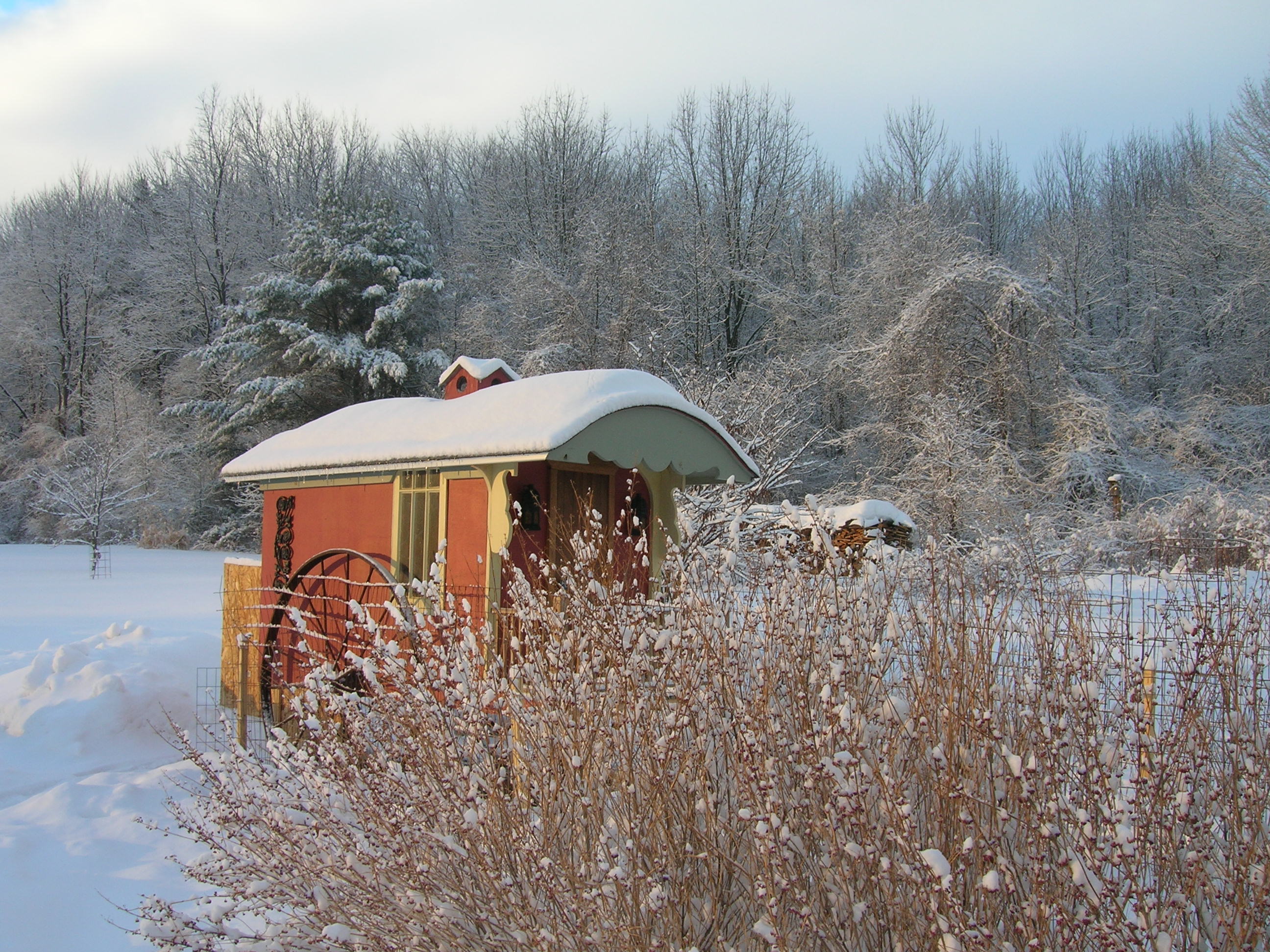
This picture was taken as the coop neared completion. It sits on old hayrake wheels which, in their second incarnation, were under a vegetable stand we had at the end of our driveway in the 1980s. The associated undercarraige came from a hammock framework that never saw any use. The front porch is completely for show, and a nice walnut door with butternut facing is completely fake. The porch lights do contain working LEDs though. The walls and ceiling are made of built-up panels; a quarter inch of plywood exterior, and inch of foam and a quarter inch plywood interior. All openings, corners, and appropriate "stud" locations are reinforced with 1 x 1 sticks. Everything is caulked. The windows are from a barn sale.
The vaulted roof was a real pain. It is of quarter inch plywood, but next time I would use narrow wood strips... the framework worked too hard to keep the plywood bent during construction.

In winter quarters. One reason for having the coop on wheels is so that its location could be changed. In summer it needs to move from time to time to give the grass a rest, and in winter it needs to be closer to the workshop so that I can tend it easily. The garden, where they can peck around all the mulch is a great place. THe project was planned as an exposition of bells and whistles, but has come somewhat short of that goal. The cupola on the roof does not have an automatic vent damper, but it has one that operates manually. The chicken door works automatically, opening and closing according to a timer. A daylight sensor is still in the works. The door is operated by a much-butchered automobile window motor,and is controlled by relays and limit switches. It is a great luxury not to have to walk out there at dawn and dusk each day. The automatic- open function is disabled in the winter though.
The interior has thermostatic heat when the coop is "plugged in" during the winter, and the coop also boasts heated roosts... self-regulating heat tape was run in a groove cut in the underside of the roost boards.

The chickens are Jersey Giants, given to me by a cousin who received quite a few after a classroom incubator project. These birds are incredibly docile... They make Reds seem like Leghorns by comparison! They are large "combination" birds, and during the cooped-up days of winter I wouldn't want to have more than the four hens and the rooster in this 4-by-6 coop.
update, February 2012.
The coop was converted to "fully autonomous operation" this summer. A daylight sensor was fabricated from a solar light and
a simple photodector circuit that drives a relay. A 12 volt sealed battery from an old exit light was fitted in the rear
roof overhang, and a small solar panel kept it charged. When the door closes at night, an interior night light LED comes on,
and the two porch lights illuminate.
As winter closed in, the coop was moved back near the shop, and 110 volts supplied to it. The short cloudy days would sometimes cause the battery to run low.

The coop,showing the door opener, the solar panel, a chicken, and a helper.